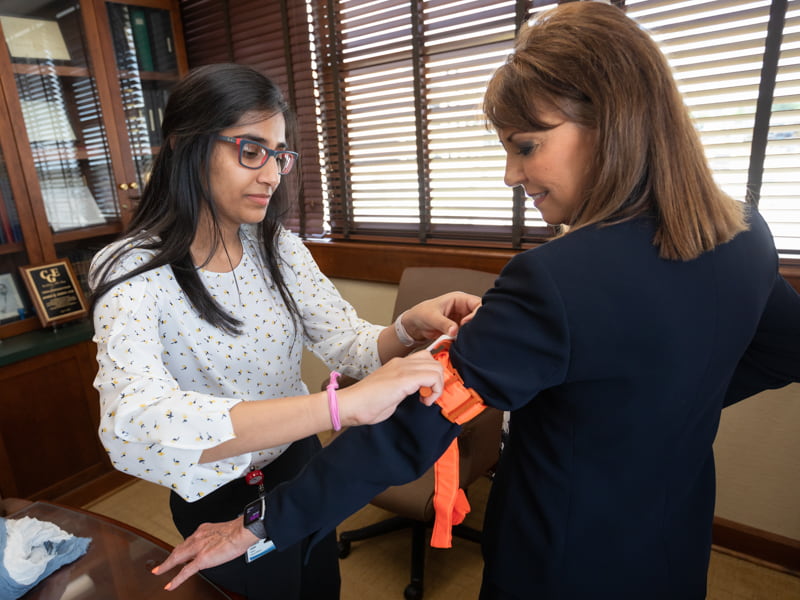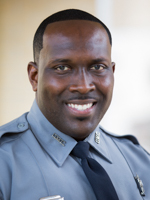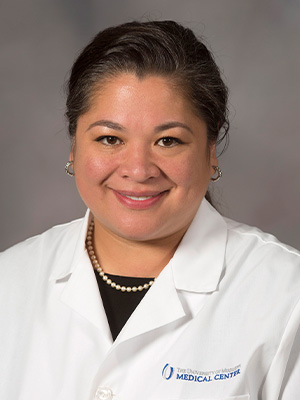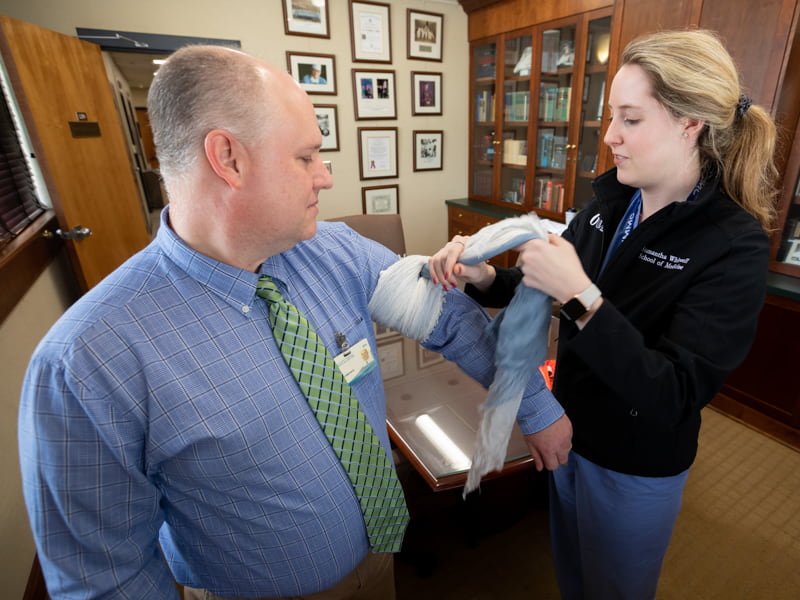When seconds count, 'Stop the Bleed' can save a life

It’s a scene repeated on Mississippi streets and highways, one that could involve you as a victim or a bystander.
“You’re traveling on I-55 South, and you just got off work when you notice a car off the road,” said University of Mississippi Medical Center Campus Police Capt. Da’Varius Jackson. “It’s struck a tree. You go to the driver’s side of the car to render help, and you immediately call 911 because you’re the only one on the scene.

“You notice that they have a lot of blood coming from their left leg,” Jackson said. If the bleeding is profuse, using a tourniquet or fashioning a band from cloth or a belt, “you tie it above the wound to help stop the bleeding. You advise them to help apply pressure, too, if they’re able. Once you’ve done that, you keep talking to them to help them remain calm.”
But your hands, and not those of an emergency responder or law enforcement officer, might be the first available to help a victim of an accident or disaster who is in danger of bleeding to death. In less than five minutes, someone can die of blood loss.
UMMC’s student chapter of the Association of Women Surgeons wants those who aren’t medical professionals or first responders to feel empowered to render that aid. The group is teaching the public as part of Stop the Bleed, a national awareness campaign to encourage bystanders to become trained, equipped and empowered to assist in a bleeding emergency before professional help arrives. May 2019 is the first-ever National Stop the Bleed Month sponsored by bleedingcontrol.org, the website of the American College of Surgeons’ Committee on Trauma.
Stop the Bleed is sponsored by the U.S. Department of Homeland Security. The program promotes five simple steps that can save a life – the same ones Jackson used in his scenario. The steps, from first to last, are call 911; stay safe; stop the bleeding; position the injured
After phoning for help, Stop the Bleed says, ramp up aid beginning with placing a bandage, cloth or piece of clothing on top of the wound and applying firm, steady pressure with both hands, if possible.
If the bleeding doesn’t stop, use a tourniquet as high as possible on the extremity where the wound is located. If you don’t have an actual tourniquet, make a band using a necktie, scarf, piece of fabric, clothing or other material that can be tightly tied around the extremity. Using a belt isn’t your best first choice, because its thickness prevents it from being tight enough to stanch a heavy flow of blood.

Dr. Felicitas Koller, assistant professor of transplant surgery, is one of the AWS faculty sponsors along with Dr. Shuntaye Batson, associate professor of surgery. “I want AWS to be an incubator for how they will conduct their surgical careers in terms of taking an active role in community advocacy and outreach,” Koller said.
Chapter members thought Stop the Bleed would be a good service project after hearing a visiting professor talk about its use in Chicago, Koller said. “It has components that address not just the mechanics of stopping bleeding, but the things that allow people to focus on their ability to respond,” Koller said.
“Just because you know how to respond to something doesn’t mean you will feel courageous enough to act,” she said.
“We teach them what to do if they are a bystander in a trauma, before EMS and first responders arrive,” said third-year School of Medicine student and AWS chapter president Samantha Whitwell. “We teach them what they can do to potentially save a life.

“This is very important to us as surgeons,” Whitwell said. “We can’t do anything unless the person gets to our table alive, so we thought this would be a very good project for us.”
AWS has visited the metro-area Boys and Girls Club of Central Mississippi to train the nonprofit’s employees. “We work with children. We want to save lives,” said Naomi Jackson, director of programs for the Boys and Girls Club of Central Mississippi.
“We do have accidents, and there are things we can do before the paramedics get there.”
Staff enjoyed the training, and she’d like to see AWS return this spring for a second session, Jackson said. “Sami and her students made it fun. It was interactive,” she said. “They talked about different things that they can use to make a tourniquet.”
The Boys and Girls Club is “a perfect target for training,” Whitwell said. “The staff has to have CPR training, but when you are dealing with young kids and there’s a lot of blood in an accident, the panic can set in. We train you to be able to set your emotions aside, and instead deal with other people’s emotions.”
AWS members also have conducted training at sites including Millsaps College and Tougaloo College, where they used the opportunity to give information about the School of Medicine and answer students’ questions about applying. Members also travel outside the metro area, planning trips this month to Moselle and Hattiesburg.
“We talk about things like using a Kroger bag as a glove so that you don’t get blood on your hands. It’s thinking on your feet,” Whitwell said. “We tell them not to use a shoelace or a wire as a tourniquet, but suggest other things you might have in your car or on your person. The average person doesn’t have a tourniquet in their car.”
Jackson, a staff sergeant in the Mississippi Air National Guard and a former Canton police officer, has seen his share of injured motorists, some ejected from their vehicles. Because Mississippi is a largely rural state, “local law enforcement can take anywhere from three to 10 minutes to arrive,” he said. “This is a critical time.”
“While it’s very important to know how to stop the bleed, it’s equally important that you have to be a good bystander if you’re going to insert yourself in a situation,” Whitwell said. “You have to manage other people around you who may be panicking.
“You have a big job for the next 15 minutes.”
Want your group or area to be trained in Stop the Bleed? Contact Whitwell at swhitwell@umc.edu


